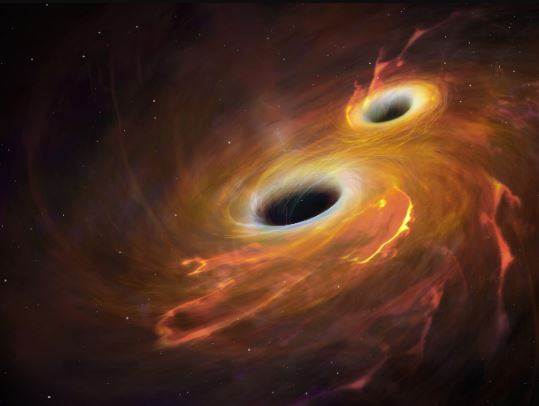Search here

02-Sep-2020
Scientists Finally Find Black Hole Merger
We do not have much information about Black Hole. The reason for this is that it does not emit any light or waves. Astronomers get information about them only from the activity of the bodies around them.
Apart from this, now scientists also get to know about blackhole related events through Gravitational waves. Recently, the team of international scientists has caught the largest and farthest black hole merger ever.
This is the first time that the process of manufacturing a blackhole 142 times heavier than the Sun has been observed. The merger was captured by the gravity interferometer Gravitational-Wave Observatory LEGO (LIGO) and gravitational wave astronomers from Italy-based Vargo (VIRGO).
This black hole is formed by the merger of two black holes. A gravitational wave that came for only 0.1 seconds was born when two blacks weighing 85 times and 66 times the weight of our Sun were merged under a binary system. That is, they collided with each other while circling each other, forming a huge black hole. This merger created gravitational waves that reached the Earth 17.2 billion light-years away and were detected by detectives of Lego and Vargo on 21 May 2019.
This new black hole is named GW190521 by scientists. This is the farthest of the gravitation waves ever caught by the gravitational wave detector. Black holes are usually formed when very heavy wires merge. It is the location of the center of a galaxy that is not visible. It stores a very large amount of matter in a very small place.
So far, only two types of black holes have been discovered, one which is made up of stars, and the other is a supermassive black hole (SMBH). The weight of a black hole made of stars is up to 10 times more than our Sun, while the weight of a supermassive black hole is about 1 million times more than the Sun.
In the meantime, scientists have placed another category, which is of a black hole weighing 100 to one lakh suns. These are called the intermediate-mass black hole (IMBH). This newly formed black hole has been discovered through gravity waves. It falls under the category of an intermediate-mass black hole.
READ HERE MORE : After PUBG Ban In India You Should Delete All Chinese Apps ASAP
The discovery has been published in the Physical Review Letters and the Astrophysical Journal Letters on Wednesday. Professor Archana Pai of IIT Bombay, one of the key scientists involved in the discovery in the report of Indian Express, has said, "Blackhole of the solar load from 65 to 120 cannot be formed by merging of stars because huge stars are very unstable. But the 85 solar load black hole in this binary system suggests new possibilities in the construction of blackhole.
Researchers from many other places, including America's Rochester Institute of Technology, say that the observatories on Earth have detected the dislocation caused by the mutual merger of about 10 black holes in space through gravitational waves, but these black holes The origin of the merger of K is yet to be explained.

Content Writer
I am a content writter !
Join Our Newsletter
Subscribe to our newsletter to receive emails about new views posts, releases and updates.
Copyright 2010 - 2025 MindStick Software Pvt. Ltd. All Rights Reserved Privacy Policy | Terms & Conditions | Cookie Policy